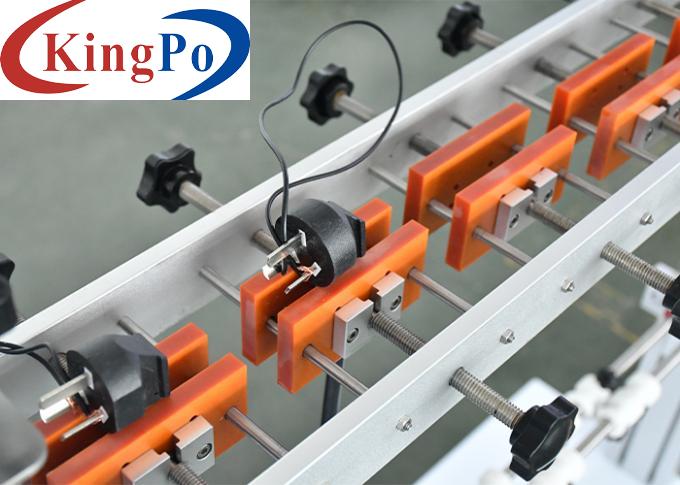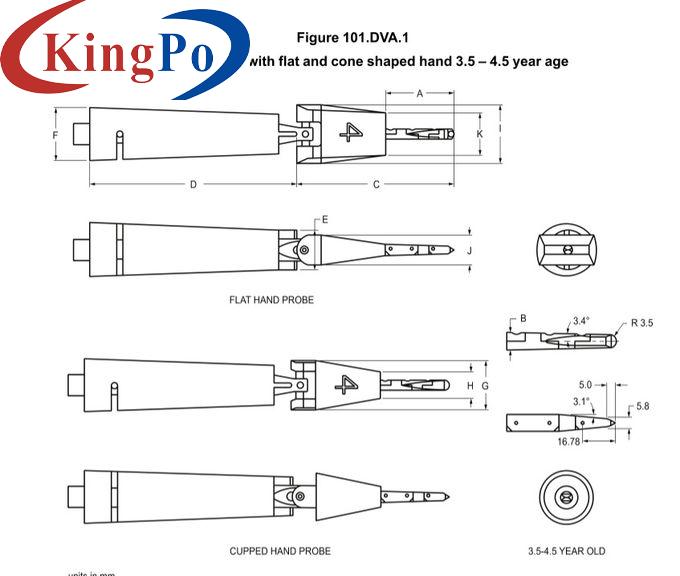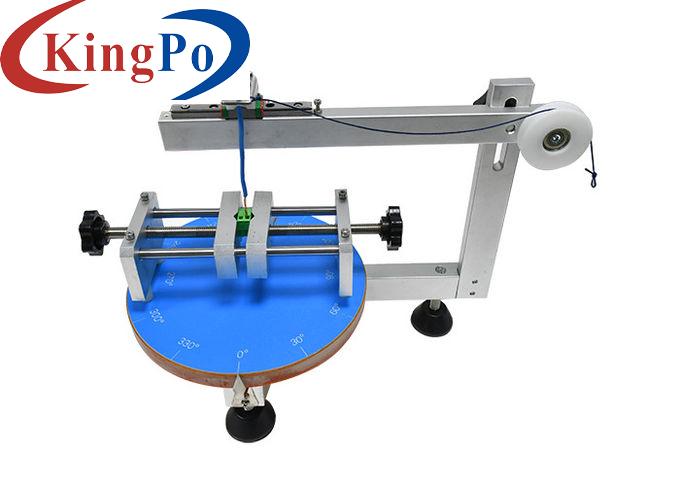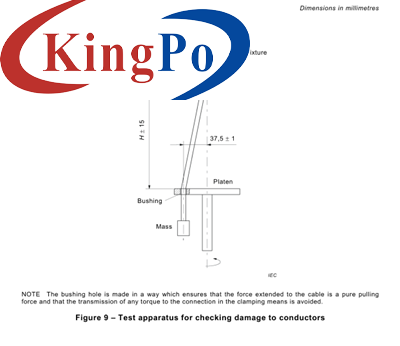Products
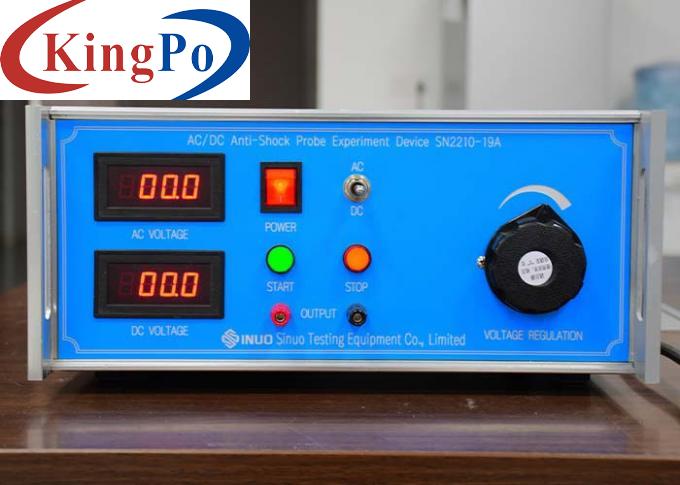
AC/DC Anti-Shock Probe Experiment Device Used With Testing Probe IEC 62196-1
Products Description
AC/DC Anti-Shock Probe Experiment Device Used With The Testing Probe IEC 62196-1
Product information:
This equipment meets the requirements of IEC 62196-1:2022 clause 10.1, 10.2, 26.6, etc.
It is used with the testing probe for the convenience and correctness. In the two output electrodes, the low potential (the red one) is connected with the energized part of the electrical appliance and the high potential is connected with the input terminal of the probe used. At this time, conduct the circuit and push the button of start. Then use the probe to touch the parts that maybe electrified. If the voltage value is displayed, it is proved that the testing part is electrified. Then push the button of reset and cut down the circuit.
Feature:
The AC/DC anti-shock probe experiment device is a specialized apparatus used for testing the electrical safety of electrical equipment and devices. It is designed to simulate and evaluate the effects of electric shock on human subjects or mannequins in controlled laboratory conditions. This device helps assess the safety measures implemented in electrical products to protect users from electric shock hazards. Here are the key features and components typically found in an AC/DC anti-shock probe experiment device:
Current Generation and Control: The experiment device is equipped with a current generation and control system that provides selectable AC or DC currents at various levels. This system allows for the simulation of different types of electric shocks and adjustable current intensities.
Safety Features: Safety considerations are paramount in the design of the device to ensure the protection of operators and subjects during testing. These features may include insulation, grounding, and protective enclosures to minimize the risk of electric shock to the operator and to ensure accurate and safe testing procedures.
Control Panel: The device incorporates a control panel that allows operators to set and adjust the desired current parameters, such as current type (AC or DC), current level, and duration. The control panel may also include safety interlocks and emergency stop buttons.
Measurement and Monitoring Instruments: The experiment device may have measurement and monitoring instruments to record and analyze the test results. These instruments can measure parameters such as current, voltage, resistance, and duration of the applied electric shock.
Human Subjects or Mannequins: The device may include a platform or fixture to hold human subjects or mannequins during the testing process. These human models or mannequins are used to simulate the effects of electric shock on the human body and assess the potential hazards.
Data Recording and Analysis: The experiment device may have data recording and analysis capabilities to capture and analyze the test results. This includes recording measurements of current, voltage, resistance, and any adverse physiological or behavioral responses observed during the test.
The AC/DC anti-shock probe experiment device is essential for electrical product manufacturers, safety testing laboratories, and regulatory bodies to evaluate the electrical safety of products and ensure compliance with safety standards and regulations. By subjecting the test subjects or mannequins to controlled electric shocks, this device helps identify potential hazards, assess the effectiveness of safety measures, and improve the design and safety of electrical products to minimize the risk of electric shock to users.
Technical Parameters:
1. Working voltage: AC 220V±5%, 50/60HZ±1%
2. Electrode output the testing voltage: AC 0-62V, DC 0~62V, can be switched.
3. it is suitable to use this equipment in such environment:
Temperature: 0-40℃
Relative humidity: ≤80%
No shaking and no corrosive gas
Notice For AC/DC Anti - Shock Probe Experiment Device:
1. Check whether connecting wires are conductive.
2. Please do not place two connecting wires on same metal part, so as to avoid the formation of the circuit and error alarm.
3. Be careful of electric shock.



